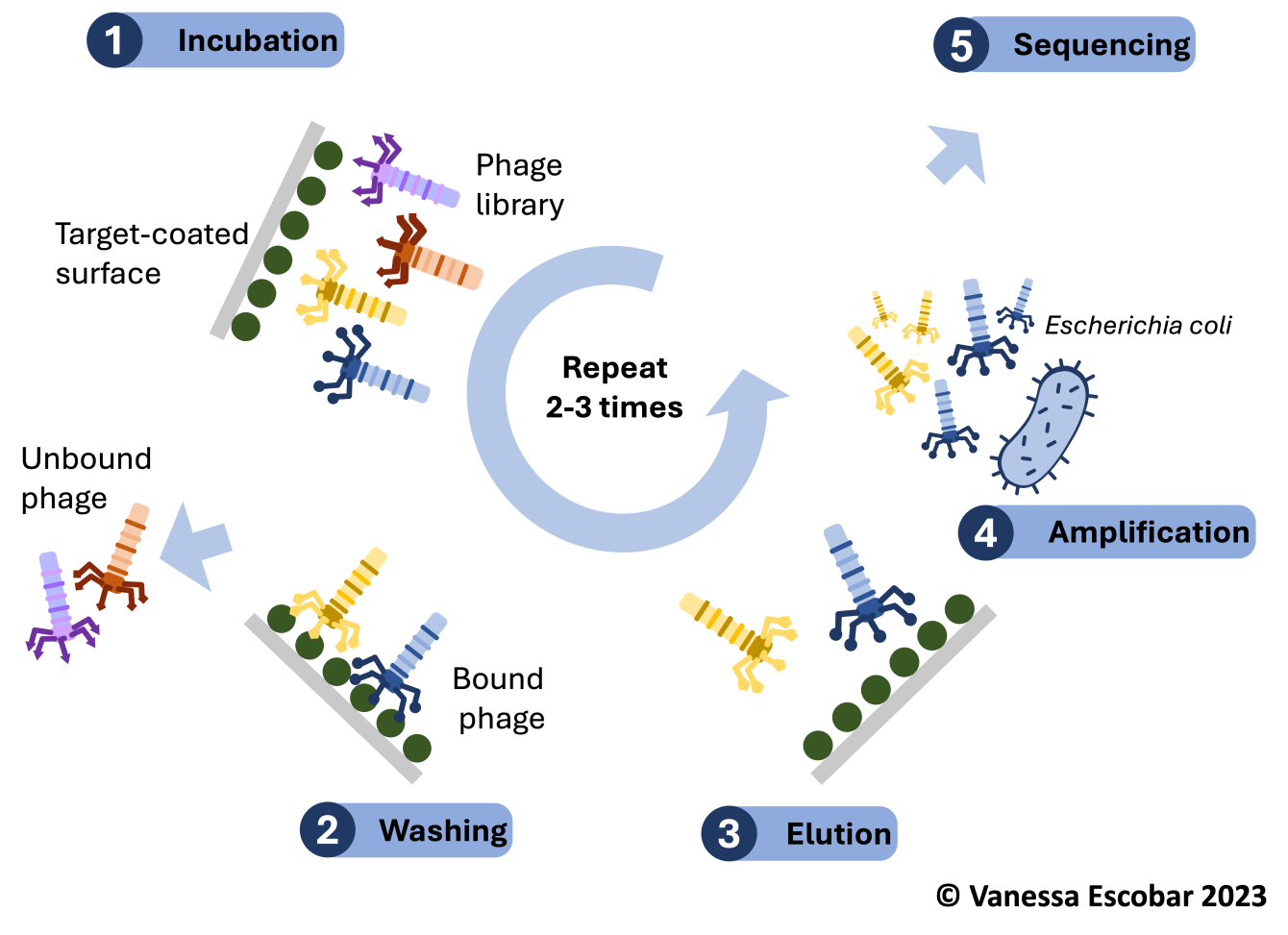- Share
- Share on Facebook
- Share on X
- Share on LinkedIn
Phage display-directed evolution to select targeted ligands from random peptide or antibody libraries
Noël Scaramozzino

Phage display is a directed evolution technique used to select and optimize proteins (antibody fragments) or peptides with desired properties. In this method, libraries of phages (viruses that infect bacteria) are genetically modified to express a variety of peptides or proteins on their surface. By exposing these libraries to a specific target, only phages presenting peptides or proteins with a high affinity for the target are retained. These phages are then amplified and subjected to successive cycles of selection, progressively improving the desired interactions. The process of mutation and selection reproduces the principles of natural evolution, but in an accelerated and controlled way in the laboratory, enabling the creation of molecules with precise functions for applications in biotechnology and medicine. In general, all detection devices (miniaturized biosensors, sensors, etc.) require the development of molecules that recognize a particular target with high affinity and specificity.
Collaborations:
- Research of antibodies against human telomeric DNA topologies (G4 DNA, i-motif)
Eric Defrancq, Thomas Lavergne, Département de Chimie Moléculaire – Université Grenoble Alpes
Jérôme Dejeu, Institut Femto-ST, département MN2S, équipe Nano2BIO – Université de Franche Comté
Dennis Gomez, Institut de pharmacologie et de biologie structurale – CNRS Toulouse - Research of peptides against volatile organic compounds (design of electronic nose)
Yanxia Hou et Arnaud Buhot, Systèmes Moléculaires et nanoMatériaux pour l'Énergie et la Santé (SyMMES) CEA – CNRS Grenoble - Research of peptides for the design of "biosensors"
Yanxia Hou, SyMMES CEA – CNRS Grenoble
Jasmina Vidic, MICALIS UMR1319 INRAE – Université Paris-Saclay
Carole Chaix, Institut des Sciences Analytiques ISA – Université Claude Bernard Lyon - Research of antibodies for molecular imaging
Jakub Toczek du Laboratoire Radiopharmaceutiques Biocliniques - Université Grenoble Alpes, Inserm U1039
Jean-Luc Lenormand du Laboratoire Translationnelle et Innovation en Médecine et Complexité (TIMC) - Université Grenoble Alpes
- Share
- Share on Facebook
- Share on X
- Share on LinkedIn